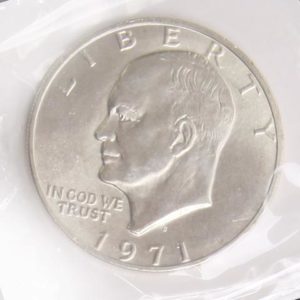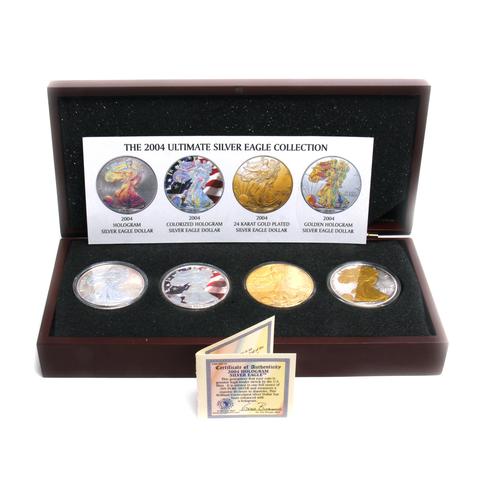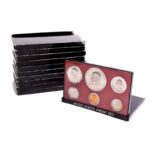class=”text-uppercase mb-5 text-yellow-sea innerpage-title”>Two Sides of a Coin: How and How Not to Care for Your Coin Collection
Coins are ever popular collectibles that represent the culture, political economy, and general history of a country. Whether you are a new or seasoned coin collector, you must know the tips and tricks to ensuring the beauty and longevity of your collection:
How to Take Care of Your Coin Collection

1. Never polish an old coin
The majority of numismatists (people who study currency), advice against polishing or intensively cleaning any rare or old coins. Although certain impurities such as light tarnishing (toning) may seem off-putting, they are still considered part of a coin’s value, and removing them can diminish its overall worth.
2. Gently wash a dirty coin
Removing surface dirt from a coin is relatively easy, and it is the only time that a coin ever requires cleaning. To remove all traces of adhered dirt, use your fingers or a soft sponge to wash the currency using mild liquid soap. Once dirt-free, rinse the solution off with lukewarm distilled water. It is essential to steer clear of using tap water since it contains chlorine, which can cause corrosion. To remove any grease stuck between the ridges or design of a coin, you may use a cotton ball dipped in acetone to remove them. Acetone, like all solvents, should only be used in a well-ventilated area. As a final step, allow your coin to air-dry on a paper towel.
However, if you come across a rare or old coin, it may be best to let the professionals at the Numismatic Conservation Service (NCS) handle the cleaning.
3. Store coins in appropriate containers
If you constantly expose your coins to the air, they are more susceptible to tarnishing. To prevent serious damages, here is the correct way to store your coins:
- Coin Tubes: Many collectors prefer to organize more common and same-sized coins in clear styrene coin tubes. Although these containers are excellent for storage, their only downside is that the coins are stacked on top of each other, which can cause scratch marks.
- Coin Flips: Flexible transparent holders (similar to card holders) are also an available option. Opt for flips made of polyester or Mylar and avoid vinyl or PVC. Most flips consist of two pockets — one for the coin and another to hold a piece of paper indicating all information about the coin. They are available in many different sizes.
- Cardboard Holders: Aside from coin tubes and flips, you can also place your coins in individual cardboard holders lined with Mylar. Using cardboard holders is generally less expensive, and it is a great way to minimize any exposure to wear and tear. Your coins will be positioned in the middle of the holder where the Mylar window is, which holds it in place when the cardboard is folded over. The holders may be stapled on three sides to keep the coin from sliding out.
- Hard Plastic Holders: Last but not the least, you may store your oldest and most valuable coins in hard plastic holders, which are more costly than any other coin holder. However, despite their pricier tag, they do offer significant protection against scratch marks and other unwanted damage.
If you need to take a coin out of its respective holder, always place it on a clean, soft surface. A velvet pad is an ideal surface for laying down coins and can be an invaluable asset when you regularly need to handle rare coins. However, a clean, soft cloth should be sufficient for less valuable coins. Make sure to avoid dragging your metal pieces across any hard surface since you are likely to scratch or damage the raised areas.

How Not to Take Care of Your Coin Collection
On the flip side, several devastating mistakes could damage the value of your collection. Allow us to discuss two of the biggest threats to your coin collection:
1. Mishandling
Touching your coins is necessary for inspection and general viewing purposes, but did you know that there is a right and wrong way to do so? Frequent touching can tarnish all coins over time, which explains why the change we get at subways and grocery stores appear dull and discolored.
The next time you reorganize or go through your collection, wear a pair of cotton gloves to prevent any oil or sweat from your hands to transfer onto the coins. Gloves also help in preventing scratches and various signs of wear.
2. Improper storage conditions
Moisture or severely high or low temperatures can impact the appearance of your coins and permanently damage them. Basements and attics tend to be poor places to store your collection. Often, the ideal location should be dry and has a consistent, moderate temperature. In addition, sunlight can also affect the condition of a coin, so make sure to keep that in consideration.
Two of the best places to store coins are either in a personal safe inside one of the primary rooms in your house; or in a safety deposit box at the bank. To ensure that moisture is kept at bay, you can try placing some silica gel packets in your safe or safety deposit box.
Conclusion
Using the right cleaning techniques and storing each coin in the right container plays a significant role in protecting your investment or collection. The proper methods will not only maintain the beauty, luster, and value of your coins, but also lengthen their shelf time.
Are you interested in selling your coin collection? Come to Biltmore Loan!
Having a coin collection is something to be immensely proud of. It shows dedication, patience, and presents an extra layer of financial security. Gold, silver, and platinum have substantial value that you can utilize when in need of extra cash. Biltmore Loan and Jewelry offers two options for unveiling the monetary value of precious metals, including selling or applying for a collateral loan. If you are interested in selling your metal collection, call us today at 480-470-7285 for Scottsdale or 480-508-9145 for Chandler. You may also complete our online form for a free market appraisal.
Ten articles before and after
7 Luxe Items to Sell for Fast Cash During a Pandemic| CHURINGA RUBY JEWELRY
Karl Lagerfeld: Fashion Legend & Savior of Chanel| CHURINGA RUBY JEWELRY
7 Unbeatable Benefits of Pawn Shop Loans in Phoenix AZ| CHURINGA RUBY JEWELRY
Be Like Lady D: The Best Non-Diamond Engagement Ring Options| CHURINGA RUBY JEWELRY
A Timeline of Harry Winston’s Glittering Legacy| CHURINGA RUBY JEWELRY
Luxury 101: How to Start Your Watch Collection| CHURINGA RUBY JEWELRY
Tiffany Lamps: What You Should Know| CHURINGA RUBY JEWELRY
30 Facts About Emeralds: Cleopatra's Favorite Gemstone| CHURINGA RUBY JEWELRY
The Best Among the Rest: 10 Greatest Painters in History| CHURINGA RUBY JEWELRY
Are Hermès Birkin Handbags Good Investments?| CHURINGA RUBY JEWELRY
